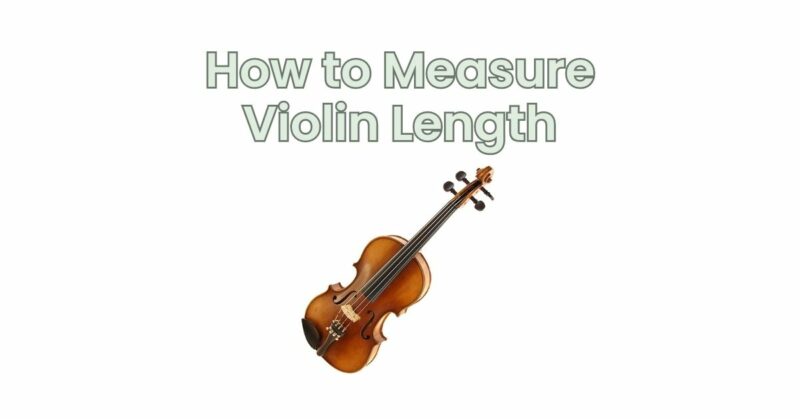Accurate measurement of a violin’s length is essential when determining its size and selecting the appropriate accessories, such as bows and cases. While violins are available in various sizes, each corresponding to different age groups or player dimensions, measuring the length of a violin can provide a precise indication of its size. In this article, we will provide a step-by-step guide to help you measure the length of a violin accurately.
- Gather the Necessary Tools: To measure the length of a violin, you will need a measuring tape or ruler. Make sure the measuring tool you choose is long enough to cover the full length of the violin.
- Position the Violin for Measurement: Place the violin on a flat surface with the back facing up and the neck extending towards your left side (assuming a right-handed player). Ensure that the violin is in its natural position without any tilting or angling.
- Locate the Starting Point: Locate the starting point for the measurement, which is the end of the violin’s tailpiece. The tailpiece is the wooden component located at the bottom of the violin body, holding the strings in place. Align the edge of your measuring tape or ruler with the end of the tailpiece.
- Extend the Measuring Tool: Carefully extend the measuring tool along the entire length of the violin, following the curvature of the body and neck. Ensure that the tool remains in contact with the violin surface and follows the contour without any gaps or bends.
- Read the Measurement: Once the measuring tool reaches the top of the scroll or headstock, read the measurement indicated on the measuring tape or ruler. This measurement represents the length of the violin.
- Interpreting the Measurement: The length measurement obtained corresponds to the full length of the violin, typically expressed in inches or centimeters. Compare the measurement to a violin sizing chart to determine the violin’s size accurately.
- Using the Measurement for Sizing: Violin sizes are commonly referred to as fractions, with the most common being 4/4 (full size), 3/4, 1/2, 1/4, 1/8, 1/10, 1/16, and 1/32. Consult a violin sizing chart to match the measured length with the corresponding size.
- Seeking Professional Assistance: If you are unsure about measuring the violin yourself or need further clarification, it is always recommended to seek assistance from a violin teacher, luthier, or knowledgeable violinist. They can provide guidance and ensure accurate sizing.
Measuring the length of a violin is a straightforward process that requires attention to detail and the use of an appropriate measuring tool. By following the steps outlined in this guide, you can obtain an accurate measurement of a violin’s length. This measurement allows you to determine the appropriate violin size for yourself or others, ensuring a comfortable playing experience and facilitating the selection of compatible accessories. Whether you are a beginner or an experienced violinist, understanding how to measure a violin’s length will prove valuable in your musical journey.


